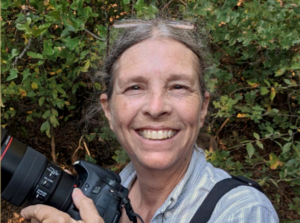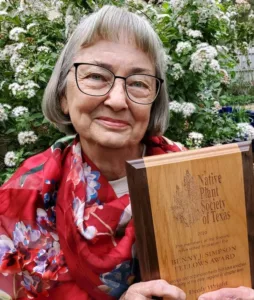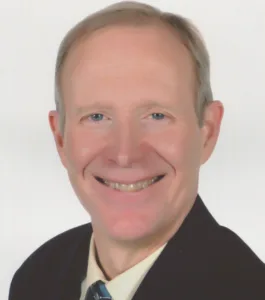Abbie Ince-Hendrickson
I was originally born in the dusty plains of Lubbock, TX. For my undergraduate degree, I attended Texas A&M University in College Station, receiving a B.S. in Microbiology, with emphasis
Beth Erwin
NPSOT Williamson County Chapter President 2021-2023 Louisiana native with a B.S. in Horticulture. Charter member of the Louisiana Native Plant Society. Retired in 2017 as curator of a private nature
Bob Dailey
Writer and lecturer on native plants, water conservation, soil conservation, and organics. He grew up on a farm in South Louisiana and spent his time as a youth wandering through

Carol Clark
Carol Clark is an amateur botany enthusiast, a Texas Master Naturalist, a longtime member of the Native Plant Society of Texas, and is a Conservation Specialist with Monarch Watch. She
Charlotte Reemts
Charlotte Reemts is an ecologist and science project director with The Nature Conservancy’s Texas Chapter where she has studied ecosystems across Texas since 2005. She works with natural areas and
Cherie Colburn
A professional landscape designer and native Texan, Cherie has designed hundreds of low-maintenance commercial and residential landscape designs since 1994 through her company, Nature’s Tapestry. She’s also helped create schoolyard
Cheryl Hamilton
Cheryl has been a member of the San Antonio Chapter of the Native Plant Society of Texas since 2008 and has also been an Alamo Area Master Naturalist since 2007.
David Will
B Sc. Agriculture Ed. Texas A&M University; M A Agriculture Sam Houston State University; Texas Certified Landscape Professional #2.; Native Plant Society of Texas member over 30 years receiving the

Deedy Wright
Deedy Wright is a life-long Texas gardener. Her particular interests are native plants, xeriscape, and invasive plants. She has been an active member of the Native Plant Society of Texas

George Diggs
George Diggs is an evolutionary biologist and botanist who has taught for more than 40 years at Austin College in Sherman, and a Research Associate at the Botanical Research Institute
Glenn Olsen
Glenn leads natural history and birding tours with GOBirding Ecotours to the hottest birding locations in the U.S. He organizes, manages, and co-guides tours to exotic locales such as the
Jake Mowrer
Dr. Jake Mowrer is a soil chemist with Texas A&M AgriLife Extension. He works with all aspects of soil management where growing plants is the goal. His research focus is
Jane Tillman
Jane Tillman is a retired University of Texas lecturer in Nutritional Sciences whose twin passions are birds and native plants. She is an active member of the Travis Audubon Society

Jim & Lynne Weber
Both Lynne and Jim Weber are retired from 30+ year, accomplished careers at IBM. They are certified Texas Master Naturalists and Lynne is a past president of the Capital Area
